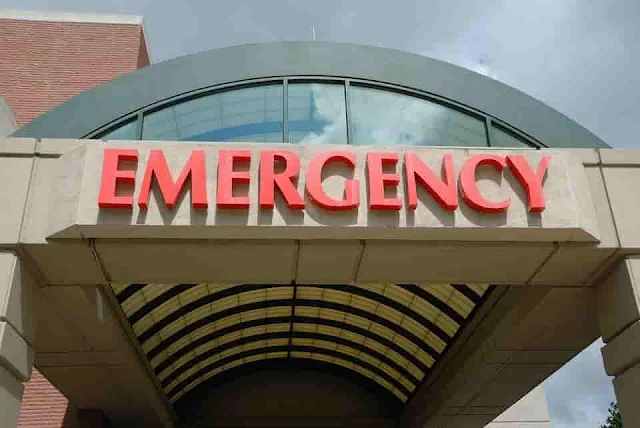Emergency Rooms Run Out of important Drugs, and Patients Are
Feeling It
CHICAGO — George Vander Linde tapped a code into the emergency
room’s automated medicine cabinet. A drawer slid open and he flipped the lid but
found nothing inside.
Mr. Vander Linde, a nurse, tried three other compartments that
might normally contain vials of morphine or another painkiller, hydromorphone. Empty.
Empty. Empty.
The staff was bracing for a busy weekend.
Temperatures were
forecast for the 90s and summer may be a busy time for hospital emergency departments — the
time of year when injuries arise from bike accidents, car crashes, broken bottles,
and gunshots.
At Norwegian American Hospital and other emergency departments
round the country, doctors and nurses are struggling for months without crucial drugs
like morphine, which is employed to ease the pain of injuries like broken bones,
or diltiazem, a heart drug.
Norwegian has been out of morphine since March, and therefore the
shortages are a part of the nagging problem that has intensified this year as
a rash of decades-old staples became scarce.
Hospitals small and enormous are scrambling to return up with
alternatives to those standbys, with doctors and nurses, dismayed to seek out
that some patients must suffer through pain, or risk unusual reactions to alternative drugs that
aren’t the simplest option.
“So many substances are short, and we’re dancing every shift,”
said Dr. James Augustine, a doctor in Cincinnati who works for US Acute Care Solutions, the corporation that employs doctors who add emergency departments for hospitals around the
country.
One of the most companies that make the drugs, Pfizer, has warned
that manufacturing problems at a number of its plants will lower supplies of the many
of its products — like morphine — until next year.
For years, drug shortages have created a behind-the-scenes
scramble as pharmacists, doctors, and nurses cobble up fixes that are often invisible to
patients.
But doctors around the country say the newest shortages are more
directly affecting patient care.
A survey in May of emergency doctors by their association, the
American College of Emergency Physicians found that 9 of 10 said they didn’t
have access to critical medicines, and nearly 4 in 10 said that patients had
been negatively affected.
“The lack of pain medications may be a huge issue,” said Dr.
Benjamin Savitch, who oversees the ER at Norwegian American for US Acute Care
Solutions.
He said that it can be difficult to elucidate to patients what's
happening. “They are often disappointed and frustrated that the system isn't
working at the extent it should,” he said.
Like such a lot in health care, the roots of the drug shortage are
complex and seemingly without an easy fix.
The overwhelming majority of the products in
question are sterile injectable drugs, hospital workhorses that are cheaply
priced albeit they will be difficult to make.
These low margins have led some companies to prevent making the
drugs, while others have did not invest in older facilities, resulting in a number of quality problems, recalls, and plant shutdowns.
The periodic problems were compounded last fall when Hurricane
Maria hit Puerto Rico, a major center of pharmaceutical manufacturing, causing a shortage
of small saline bags that is a mainstay in hospitals and worsening a yearslong problem
with keeping intravenous fluids available.
But whilst that crisis subsided, hospitals began grappling with
the aftermath of another industry cataclysm — serious manufacturing problems at
Pfizer, the nation’s largest maker of generic injectable drugs.
In February of last year, the Food and Drug Administration issued
a warning letter to the company for problems at its plant in McPherson, Kan., one among
several factories Pfizer took over after it acquired the injectable maker Hospira in 2015.
The agency described the plant’s manufacturing process as “out of
control” and, among other problems, said Pfizer had not properly investigated
complaints about vials that contained particles later identified as bits of cardboard.
If injected, the agency said the contaminated vials could pose a
“significant risk” to patients.
In September, the agency sent Pfizer another warning letter, that
point for problems at its plant during a suburb of St. Louis, where the EpiPen is formed.
Pfizer names many products on its list of back-ordered items
because it works to repair its plants — the status of many of the drugs is described simply
as “depleted,” with an “estimated recovery” date of 2019.
the issues have led to shortfalls of other products, including
some that Pfizer makes for other companies.
In May, the F.D.A. placed the EpiPen on its shortage list, also as
a competing product, Adrenaclick, which is additionally made by Pfizer.
EpiPen is sold by Mylan, while Adrenaclick is sold by Impax
Laboratories.
As Pfizer’s supplies have run low, competitors have struggled to
stay up with demand, depleting their own stock.
The shortage of opioids like morphine has been aggravated by federal
quotas that restrict the amount of narcotics anybody company can manufacture;
this spring, Pfizer relinquished a part of its federal quota,
which was then reallocated to other manufacturers.
Some of the shortages became severe enough that the F.D.A. has
allowed Pfizer to sell products that normally would are recalled:
In May, Pfizer released morphine and other drugs in cracked
syringes, with instructions to health care providers to filter the drugs before
injecting them.
Philip J. Trapskin, the program director of Medication Use
Strategy and Innovation at UW Health, the University of Wisconsin-Madison’s health system, said
such actions pose a
risk to patients and said he had instructed his staff to seek out
other suppliers.
Otherwise, he said, with about 2,500 nurses in his health care system who might be got to use the syringes, “We’re quite setting them up to fail
if we give them something that's cracked and compromised.”

0 comments:
Post a Comment